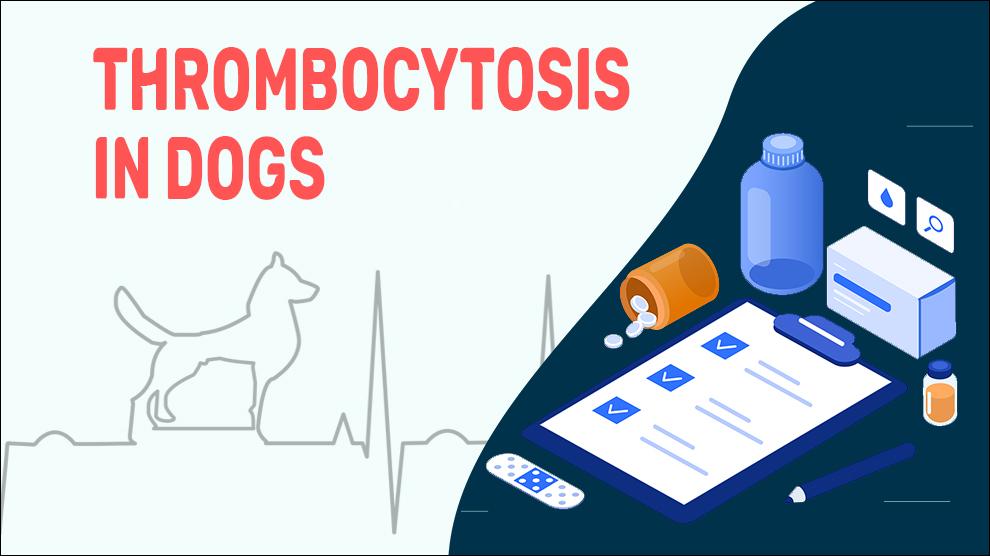What Is Thrombocytosis In Dogs?
Thrombocytosis, also known as thrombocythemia, is a hematologic abnormality in dogs and has been defined as an increase in the number of platelets in peripheral blood. Thrombocytosis has been associated with various metabolic, inflammatory, and neoplastic conditions.
Thrombocytosis is classified into either a primary or secondary process. Also called essential thrombocythemia, primary thrombocytosis is a myeloproliferative disease caused by increased production of platelets. The disease etiopathogenesis in dogs has not been determined and diagnosis is dependent on the exclusion of the presence of other disorders.
Secondary thrombocytosis is more prevalent than primary thrombocytosis in both humans and animals. Secondary thrombocytosis also called reactive thrombocytosis, occurs due to underlying conditions (neoplasia, trauma, iron deficiency, or inflammation). The most common cause in several study populations of dogs is neoplasia. Dogs with hyperadrenocorticism or that have simultaneous administration of glucocorticoid commonly have thrombocytosis while the mechanism is not well understood.
Thrombocytosis due to inflammatory diseases is caused through a variety of mechanisms. In the acute phase response, Immunomodulatory cytokine - interleukin‐6 increases the production of thrombopoietin (TPO). Thrombopoietin is a lineage-dominant hematopoietic cytokine produced in the liver and it is the primary regulator of development factor (MGDF) because of its effect on the bone marrow, stimulating platelet production and megakaryocyte proliferation.
Symptoms Of Thrombocytosis In Dogs
- Blood in the urine(hematuria) or stool (Hematochezia)
- Seizures
- Redness or discoloration of the skin
- Distended abdomen
- Chronic anemia
- Extreme fatigue
- Nausea and vomiting
- Sudden pain and/or swelling in joints or muscles
Treatment Options For Thrombocytosis In Dogs
The course of treatment will depend on the cause of your dog’s thrombocytosis
Anticoagulants: Low-molecular-weight heparins (LMWH) - enoxaparin (Lovenox), dalteparin (Fragmin), and tinzaparin (Innohep)
Vitamin K deficiency- parenteral (SQ) injection, phytonadione injections, or Vitamin K1 (Merck, Aquamephyton, Dohme, Sharp)
Inherited disorders require long-term treatment; on the other hand, acquired thrombocytosis requires proper diagnosis and treatment of the underlying cause itself
Immune-mediated diseases: Immunosuppressive medications to suppress the immune system
Home Remedies For Thrombocytosis In Dogs
Always check with vets for any home remedies specific to your dog’s situation.
How To Prevent Thrombocytosis In Dogs?
Thrombocytosis due to hereditary abnormality can be prevented by screening the affected dogs so that the risk of passing the condition on to the next generation is averted.
Affected Dog Breeds Of Thrombocytosis
Causes And Types For Thrombocytosis In Dogs
1. Causes:
- Infectious diseases: Soft-tissue, pulmonary and GI infections
- Immune-mediated diseases (e.g., Immune-mediated hemolytic anemia, immune-mediated thrombocytopenia)
- Cancers (e.g., leukemia, hemangiosarcoma, lymphoma)
- Medications including lactams, Anti-Bacterial Agents, Vinca Alkaloids, Miconazole
- Toxins and venoms (e.g., arsenic, benzene, zinc, rattlesnake bites)
2. Types:
Primary or essential thrombocytosis: This increased production of platelets is caused by abnormal conditions arising from the bone marrow itself.
Secondary or reactive thrombocytosis: this is the more common form of thrombocytosis in both humans and animals. This occurs due to underlying events or conditions or the use of certain medications (neoplasia, trauma, iron deficiency, or inflammation).
3. Mortality:
Thrombocytosis incidence is rather common. Although there's no proper cure for thrombocytosis, medications can control symptoms and decrease the risk of complications. Despite the disease, life span is expected to be normal.
4. Diagnosis:
- Complete blood count/ Serum biochemical study
- Fecal analysis, urinalysis
- Xrays/ultrasound
- Platelet count
- Coagulation function
- Flow cytometry
- Clot retraction
- Smear evaluation
5. Prognosis:
This depends on the dog’s underlying disease. The prognosis for recovery of acute thrombocytosis is guarded and in chronic cases, the prognosis depends on the affected organs and overall health of the dog.
When To See A Vet For Thrombocytosis In Dogs?
Time to visit the vet clinic for an examination, if you notice any of the following:
- Blood in the urine(hematuria) or stool (Hematochezia)
- Seizures
- Redness or discoloration of the skin
- Distended abdomen
- Chronic anemia
Food Suggestions For Thrombocytosis In Dogs
- Ground meat- labeled 90 percent lean or leaner(beef, chicken, turkey)
- Brown rice with lukewarm chicken soup and cooked vegetables
- Easy-to-digest fatty proteins: Chicken breast (skinless), white meat (skinless) and thigh meat (skinless), Organ meats(liver), etc
- “Round or loin” cuts of pork/ beef (top loin, top sirloin, top round, pork tenderloin, bottom round steak)
- Vitamin K supplements: Cabbage, egg yolks, liver(raw or cooked), parsley, etc
Conclusion
Treatment and subsequent prognosis will vary depending on the specific underlying defect of the dog.
Congenital conditions may need lifelong management and often cannot be “cured.”
The clinical signs acquired due to most of the underlying conditions (save for malignancies and a few other chronic conditions) can be controlled by proper treatment. Within a month of starting the proper treatment, most of the secondary thrombocytosis symptoms will be relieved.

















